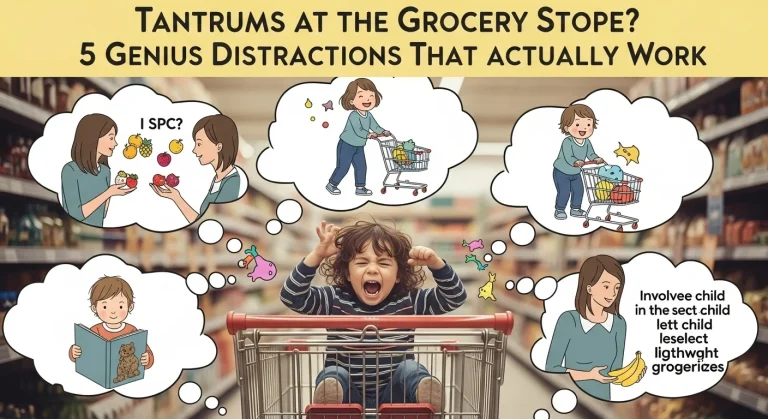Tantrums and Sibling Rivalry: How to Manage Two Toddlers at Once
Introduction
Managing one toddler is a challenge, but managing two toddlers—especially when tantrums and Sibling Rivalry in toddlers come into play—can feel like climbing a mountain barefoot. As a mom of two toddlers myself, I’ve lived through the biting, the toy-snatching, the explosive meltdowns, and the tug-of-war over attention. This article is not just a guide—it’s a survival kit based on real-life experience, backed with strategies that work.

Why Toddler Tantrums and Sibling Rivalry Happen Together
When two toddlers are growing up side by side, they naturally compete for your time, your hugs, and even for the same red sippy cup. Here’s why this happens:
- Developmental Stage: Toddlers are just starting to understand emotions. They feel jealousy, anger, and frustration, but don’t yet have the words to express them.
- Limited Emotional Regulation: They haven’t developed self-control. So when one toddler gets a toy first, the other might scream instead of asking politely.
- Copycat Behavior: If one toddler throws a fit, the other often mimics—intensifying the chaos.

How I Used Predictability to Minimize Meltdowns
Toddlers thrive on routine. And when you’re juggling two of them, predictability becomes your secret weapon. Here’s what worked in our home:
- Set a Shared Daily Schedule
Breakfast, playtime, naps, and bedtime should happen at the same time every day. Knowing what comes next eases anxiety and reduces power struggles. - Use Visual Timers
I used a small sand timer to show how long one toddler had to play with a toy before it was the other’s turn. It reduced yelling and grabbing more than I expected! - Label Feelings Often
“You’re mad because he grabbed your truck. It’s okay to feel mad, but we don’t hit.” Talking them through emotions helped both kids feel heard—and tantrums dropped.

Dealing with Simultaneous Tantrums
This is every mom’s nightmare—both toddlers screaming at the top of their lungs. Here’s how to survive the storm:
1. Stay Calm (Even If You’re Dying Inside)
If you react emotionally, it escalates things. Instead, take a deep breath, squat down to their level, and speak softly. They feed off your energy.

2. Divide and Conquer
If possible, separate them. Take one to another room or different corner. It helps calm them down and lets you give individual attention.

3. Prioritize the Trigger
Sometimes one meltdown triggers the other. Identify the initial cause and address it first—usually the one who lost a toy or felt left out.
Creating a Tantrum-Safe Environment
Prevention is powerful. Here are some mom-tested ways to reduce triggers in your home:
- Duplicate Favorite Toys: If there’s one favorite dinosaur, get two! Avoid battles where possible.
- Designate Personal Spaces: Even if you have a small home, use baskets or colored mats to create “zones” for each child to play in.
- Rotate Toys Weekly: Keeps things fresh and avoids boredom-triggered meltdowns.

Teaching Turn-Taking Without Tears
Sharing is a skill. It doesn’t come naturally to toddlers—but it can be taught gently.
- Practice Turn-Taking Games
Simple games like rolling a ball back and forth or passing a stuffed toy around during story time can make sharing fun and safe. - Use a Turn-Taking Song or Timer
I used a song—“It’s your turn, then it’s mine, we’re taking turns, it’s sharing time!” It became part of our routine. - Praise Sharing Moments
Any time one toddler willingly shares—even for 2 seconds—celebrate it! “Wow! You gave her the book! That’s so kind!”
Making Each Child Feel Special
Sibling rivalry often peaks when toddlers feel they have to fight for your attention. Here’s how I tackled that:
- One-on-One Time
I carved out 10–15 minutes daily for each child alone. It doesn’t need to be fancy—a puzzle, a book, or just snuggling. It made them feel seen. - Let Them Help Each Other
Encourage helpful behavior: “Can you give your brother his cup?” Toddlers love feeling responsible—it boosts confidence and creates bonding. - Talk About Family Teamwork
Use words like “We’re a team” or “We help each other.” I made a simple “Team Family” chart with stars for helping and kind words.

How I Use Emotional Coaching Daily
Instead of yelling “Stop crying!” I learned to coach emotions instead:
- Validate Their Feelings
“I know you’re angry your sister took your crayon. That’s really frustrating.” - Name the Emotion
“You’re sad. That’s okay. Let’s find a way to feel better.” - Offer a Solution
“Let’s take turns with the crayon. Or I can give you another one.”
These conversations (even if short) helped both toddlers build emotional awareness—slowly but surely.

What to Do When You’re at Your Breaking Point
Even the calmest mom has limits. When the house feels like a warzone, here’s what helped me:
- Tag in Help
If your partner, grandma, or a friend is around—ask them to take one toddler for a walk. No shame in needing support. - Use Screen Time Strategically
A 10-minute calming video or a lullaby playlist can give everyone a break. - Step Away Safely
Place your toddlers somewhere safe (crib, playpen) and step into another room to breathe. You’re human. You need space too.

When to Worry About Tantrums or Rivalry
Most tantrums are normal. But if you notice these signs, consider professional advice:
- Daily aggression that leaves bruises
- Tantrums lasting over 20 minutes regularly
- Language delays or trouble expressing any feelings
- Constant regression in one toddler (bedwetting, baby talk)

Helpful Tools and Resources
If you’re feeling overwhelmed, you’re not alone. Here are tools that helped me:
- Books:
- “Siblings Without Rivalry” by Adele Faber
- “The Whole-Brain Child” by Daniel J. Siegel
- Apps:
- Calm for Moms
- Toddler Timer for routine visuals
- Must-Haves:
I found the parenting tips in this Back-to-School Must-Haves list surprisingly helpful for reducing stress.
Final Thoughts: You’re Doing Better Than You Think
Managing tantrums and sibling rivalry is a marathon—not a sprint. Some days, you’ll feel like a superhero. Other days, you’ll cry in the bathroom with the door locked. That’s normal.
The fact that you’re reading this, trying new things, and looking for ways to grow already makes you an incredible mom.
So breathe. Take one tantrum at a time. And remember—you’ve got this.







